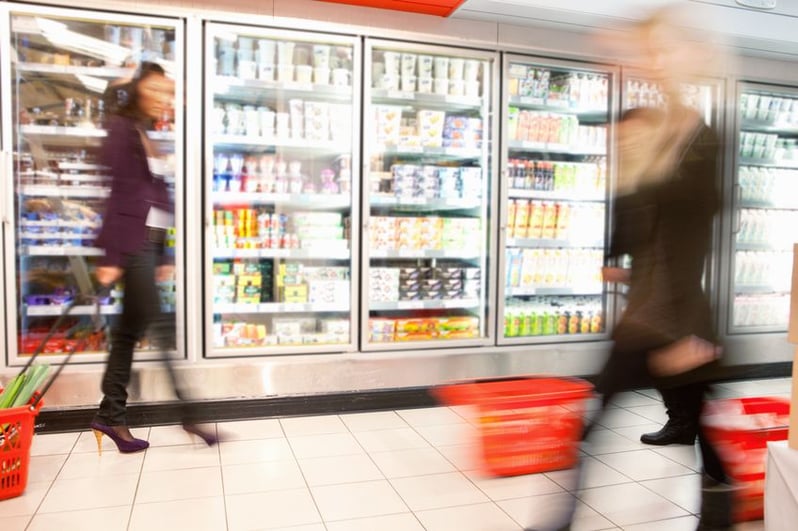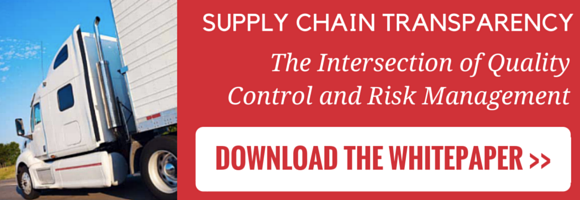
With the rise of social media, bad news in food safety has broken the speed of light and swiftly become a retailer's worst nightmare in the food industry. While potential issues can and should be communicated as quickly as possible to prevent illness, those conversations aren't limited to a single consumer-retailer sphere: the whole world is listening. An outbreak, or even a cautious recall, has the momentum to topple brand image and damage sales, if it's not closing doors entirely.
As 2016 marches steadily onward, three culprits lurk in the shadows, waiting for a gap in food handling and packaging procedures: e. coli, norovirus and salmonella. Here's how to learn from the mistakes of others, and prevent your brand from becoming an unfortunate infographic-bound statistic.
Unpleasant Surprises with E. Coli
Problems with safety in the food supply chain aren't limited to America, and by watching missteps in other countries we can learn a great deal about how to avoid scandal and problems. Only a scant few weeks ago, in early February, the Japan Times reported that Minori Foods in the Gifu Prefecture of Japan was once again under investigation, this time for supposedly-discarded ice cream cups and chocolate bars, knowingly resold after they were found to tainted with e. coli. This unfortunate scandal serves as a reminder that the supply chain doesn't "drop off" after an ingredient's useful lifespan; companies must create and enforce destruction protocol to keep their brands free from negative association or potential liability.
The Norovirus Blame Game
Resiliency and long shelf life is typically a boon in the food industry, except when it comes to contaminants. Norovirus, a particularly contagious and aggressive gastrointestinal "bug," can sweep through a restaurant or dining area in record time. Cruise Law News highlights a particularly troublesome setting for outbreaks — cruise ships — and the finger-pointing that ensues. The cruise ships blame the passengers, and the passengers, unfortunately, usually respond by blaming the food. Food manufacturers and distributors can help distance themselves by ensuring their food handling and shipping practices are beyond reproach and careful, accurate records are kept of food storage techniques and temperature readings prior to shipping out product.
Salmonella: An Unfortunate Household Name
The villain of many a food safety speech, the specter of salmonella usually goes hand-in-hand with the concept of raw meat, particularly poultry. Unfortunately, that's not all — grim stories of tainted cucumbers and bagged salad recalls dominated news outlets like CNN and Chicago's WGN in 2015. This nasty bacteria causes infections in victims, which can lead to severe illness or even death in the very young, very old or immuno-compromised. Though it's more common in animal-origin foods like meat, eggs and dairy, it has been showing up with distressing frequency in produce as well. To avoid becoming a bullet point on a news story, supply chain professionals in the food industry need to safeguard their brand via frequent supplier audits and be prepared to switch suppliers if a problem arises. Setting up contingency plans is never a waste of effort, particularly when a single outbreak can make or break consumer trust in your end product.
From Product to Packaging
When it comes to meat-based products, manufacturers and procurement teams need to take a more holistic approach to eliminating potential contaminants. Rigorous training and/or monitoring (if the facility is a third party provider) will help combat human-based interference, and secure packaging and contaminated product disposal protocols will guard against shipping and receiving QC issues. Offering assistance or guidance on the consumer end, such as using promotional case thermometers, will help secure the end of the food supply chain as well. Using these promotional products openly will also demonstrate your brand's (whether that is food product or store branding) commitment to safe food storage and sale to consumers, which gives you an enviable edge in perception and sales.
Have a Plan
Unfortunately, it's possible to do everything by the book and still run into an issue, so don't let a potential outbreak or recall catch you flat-footed. Brainstorm immediate steps with your management team, outlining how to track down the potential source of illness or infection, which agency or individual to contact, and how soon public notices such as recalls and warnings should be issued and through which media channels. A problem on the food health scale is worrisome enough; floundering with a solution or unspecified delays on the part of a retailer or supplier may be seen as a cover up by concerned consumers. Use guidelines such as the World Health Organization's steps to combat foodborne disease if you aren't sure where to start your playbook.
The food supply chain can be very vulnerable, especially when supply lines are stressed. Don't let demand compromise food safety; learn from the mistakes of others and adopt the attitude that slow and steady wins the race. The more cautiously you approach and support your supply chain, the less likely that sloppy handling or questionable sourcing will be able to wreak havoc on your brand image. To paraphrase a certain forest ranger bear, only you can prevent foodborne illnesses in 2016 — so make sure your food products are produced, shipped, handled and sold the right way, every time.






